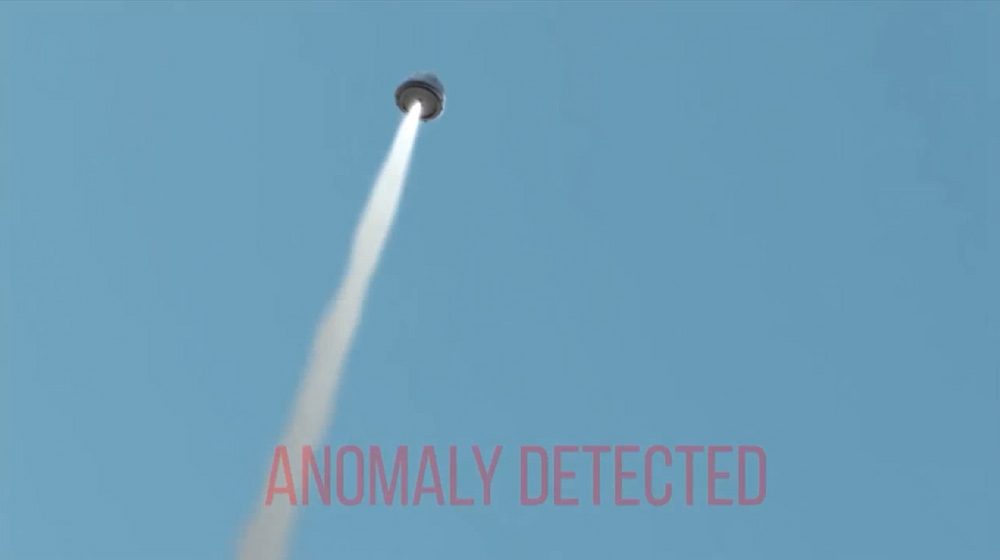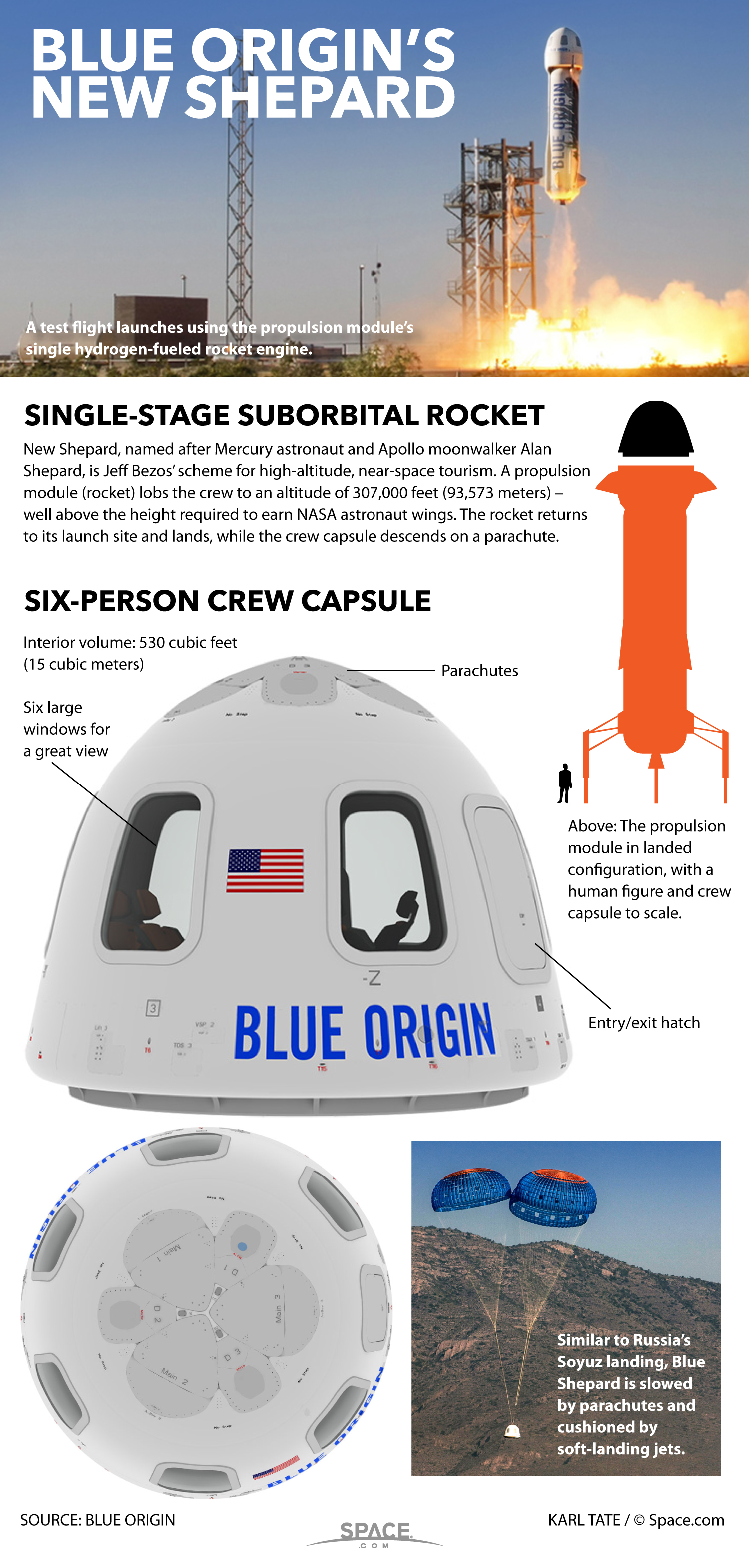
The private spaceflight company Blue Origin plans to launch a crucial abort test of its New Shepard suborbital vehicle next month, and you can get a sneak peek at the action in a new video animation.
Blue Origin, which is run by billionaire Amazon.com founder Jeff Bezos, plans to see how the New Shepard system would respond to a launch emergency during the uncrewed test, which Bezos said should happen in the first half of October. The new Blue Origin abort video shows viewers how that abort system works.
"A solid rocket motor fires for 2 seconds, quickly separating the crew capsule away from the booster," the video's narrator says. "Once away, the capsule enters a standard descent profile, deploying drogue and main parachutes before coasting down to a landing."

The New Shepard suborbital spaceflight system consists of a rocket and capsule, both of which are reusable. Indeed, the same New Shepard booster has launched and landed during uncrewed test flights four times since November 2015.
That identical booster will take to the air again for the abort test — but it probably won't survive the ordeal, Bezos said.
"The booster was never designed to survive an in-flight escape," Bezos wrote in a Sept. 8 email update. "The capsule escape motor will slam the booster with 70,000 pounds of off-axis force delivered by searing-hot exhaust. The aerodynamic shape of the vehicle quickly changes from leading with the capsule to leading with the ring fin, and this all happens at maximum dynamic pressure."
Blue Origin is developing New Shepard to fly paying customers and scientific experiments on brief jaunts to space. On Monday (Sept. 12), Bezos announced that the company also plans to build a heavy-lift rocket called New Glenn, which will launch payloads and people to Earth orbit and beyond.
Get the Space.com Newsletter
Breaking space news, the latest updates on rocket launches, skywatching events and more!
New Shepard is named after Alan Shepard, who became the first American in space during a suborbital flight in May 1961. New Glenn's namesake is NASA astronaut John Glenn, who in February 1962 became the first American to orbit Earth. (Cosmonaut Yuri Gagarin became the first person to reach space and orbit Earth during his historic April 1961 flight.)
Follow Mike Wall on Twitter @michaeldwall and Google+. Follow us @Spacedotcom, Facebook or Google+. Originally published on Space.com.
Join our Space Forums to keep talking space on the latest missions, night sky and more! And if you have a news tip, correction or comment, let us know at: community@space.com.

Michael Wall is a Senior Space Writer with Space.com and joined the team in 2010. He primarily covers exoplanets, spaceflight and military space, but has been known to dabble in the space art beat. His book about the search for alien life, "Out There," was published on Nov. 13, 2018. Before becoming a science writer, Michael worked as a herpetologist and wildlife biologist. He has a Ph.D. in evolutionary biology from the University of Sydney, Australia, a bachelor's degree from the University of Arizona, and a graduate certificate in science writing from the University of California, Santa Cruz. To find out what his latest project is, you can follow Michael on Twitter.









